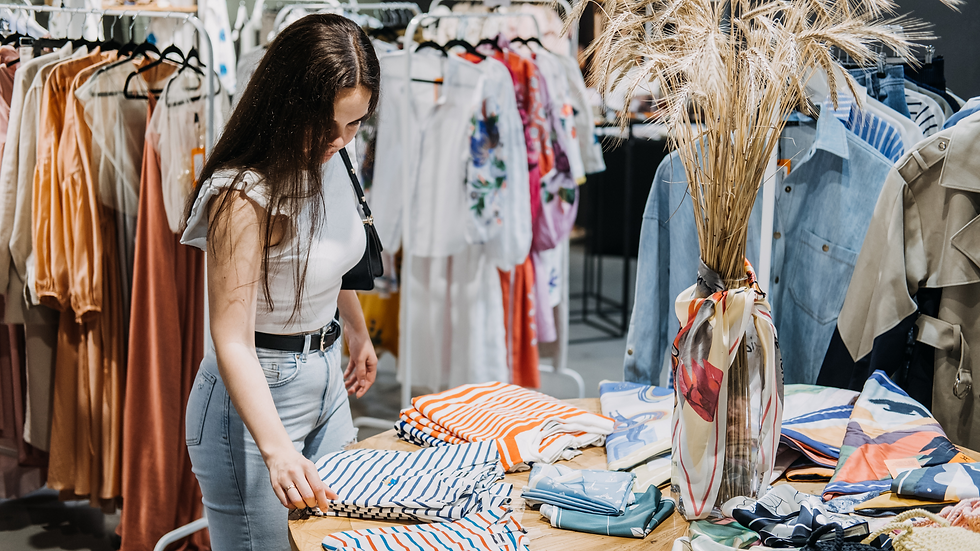What Does Plastic Have to Do with Fast Fashion?
- Viroqua Plastic Free
- May 25, 2023
- 3 min read

When I think of plastic waste, I envision a plastic bag caught in a tree branch or plastic milk jugs and yogurt cups peeking out of a bin on garbage collection day. I never even considered that plastic lurks in our closets and dresser drawers until I learned that two out of three pieces of clothing are now made of plastic in the form of synthetic fibers like polyester, nylon and fleece.
This is due in large part to the popularity of fast fashion – inexpensive, poorly made clothing that wears out quickly or becomes unfashionable in a very short amount of time. In order to offer low prices to customers, fast fashion manufacturers use cheap labor in factories that often have unsafe working conditions, low wages and long hours.
Instead of styles changing with the seasons as has been the practice in the past, stores now receive new shipments of clothing weekly or even daily. This constant influx of new styles means older items are “out of style” in a very short amount of time.
The fashion industry is the second largest polluter on the planet after the oil industry and is responsible for 10% of annual global carbon emissions. Harmful chemicals are used in manufacturing synthetic fabrics and many of the countries that manufacture synthetic clothing do not have strong environmental laws in place. As a result, the toxic waste waters are often left untreated and dumped into rivers.
Popular fast fashion brands include Nike, Adidas, Urban Outfitters, Free People, GAP, Victoria’s Secret, Zara, H&M, Forever 21, Uniqlo, Topshop, Guess, Old Navy, Hollister, Abercrombie & Fitch, American Eagle Outfitters, Brandy Melville, Nasty Gal, Shein, ASOS, Wish, Target and Walmart.
Do you see your favorite brand on the list? If so, check out “Good On You,” a fashion brand rating site. Simply type the name in the search box and see how a brand is rated in its treatment of people, animals and the planet.
Fast fashion is everywhere. Here are some tips to help you avoid it.
Buy second-hand – check out local thrift shops or online sites like Poshmark and ThredUP.
Organize a clothing swap – invite family and friends to bring clothing they no longer wear to a “swap party.”
Go shopping in your own closet – before you purchase something new, take a look in your own closet to see if a treasure is already hiding there.
Shop local – 97% of fast fashion is manufactured overseas. Check out local suppliers in your own town.
Invest in timeless pieces – even when an item is inexpensive, if you only wear it a few times, the cost per wearing can be high. Instead purchase quality items that will always be in style.
Change your habits – say “no” to impulse purchases, wear each item until it is no longer wearable, repair rips and tears, sell your unwanted clothes online or give them to a friend.
Look for sustainable materials that are biodegradable –shop for recycled and organic cotton, organic hemp, organic linen, organic bamboo (bamboo linen), wool (merino, cashmere), modal (made from beech tree cellulose), silk or cork.
Choose ethically made clothing – do some research to learn which brands care about human rights and the environment. Manufacturing details should be listed on brand websites – it may be a red flag if they are not. Keep a list of which brands follow sustainable practices and support them.
“Buy less, choose well, make it last.” – Vivienne Westwood, British clothing designer





Thanks! This article is full of important information that expanded my awareness of the plastics problem. I feel it's important to remember that we human beings are the number one and actually the only polluters on the planet. We're responsible for the pollution caused by the fossil fuel industry, fashion industry, military, travel industry, etc. I think we need to keep that in mind, as its easy to blame the industries while forgetting that we, the people, enable their existence.